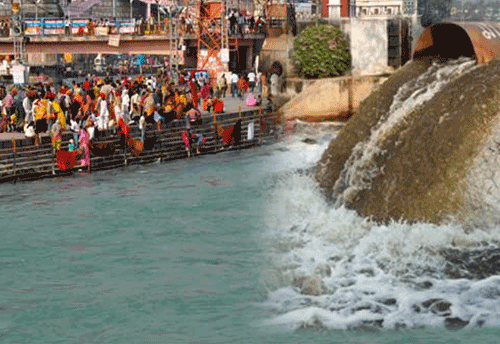764 Grossly Polluting Industries identified by CPCB along river Ganga
Updated: Mar 30, 2017 10:04:23am

764 Grossly Polluting Industries identified by CPCB along river Ganga
New Delhi, Mar 30 (KNN) The Central Pollution Control Board (CPCB) has identified a total of 764 Grossly Polluting Industries along the entire stretch of river Ganga and its tributaries.
These industries are discharging more than pollution load of BOD 100 kg per day.
Union Minister of State for Water Resources, River Development and Ganga Rejuvenation Vijay Goel, in a written reply in Lok Sabha, said, “From December 2015 to January 2017, 573 inspections have been carried out by CPCB covering 302 GPIs.
141 units were found to be complying with stipulated norms, 96 were found non-complying and 65 were found closed. Closure directions were issued to 45 non-complying units, show cause notices to 37 and letters to 14 non-complying units,” he added.
The government has decided to crack the whip on 1,000 industrial units across five states along the Ganga that are continuing to empty untreated waste into the river.
Meanwhile, the Namami Gange programme had started a special drive to inspect the units to find out if they are complying with the norms for treating industrial effluents before releasing them into the river.
According to a report, for this the Ministry has reportedly roped in reputed institutions to do the inspection who will submit their report in a month. Action including the closure of polluting industries will be initiated against those units found violating norms.
Approximately 500 million litres per day (MLD) of effluents are discharged daily into the Ganges. According to the ministry data, the municipal sewage generation from the 118 towns along the river in five states is estimated at 4,790 MLD. As against this, currently treatment capacity of 1,017 MLD is available.
A CPCB survey in the past has shown that over 52% of sewerage from small and mid-size towns along the Ganga goes untreated into the river.
Among the industries that contribute to maximum untreated effluents are those manufacturing pulp and paper, sugar and chemicals.












